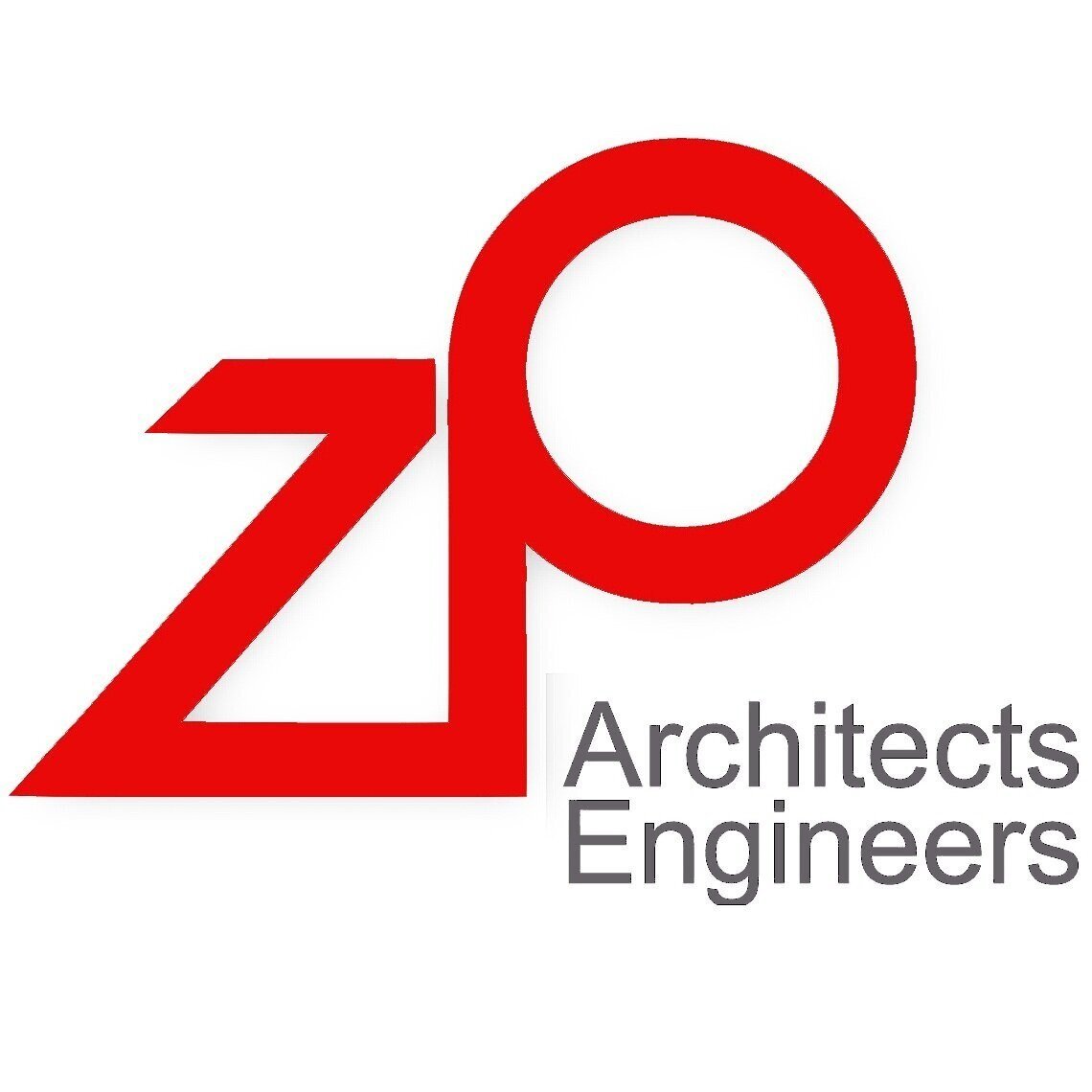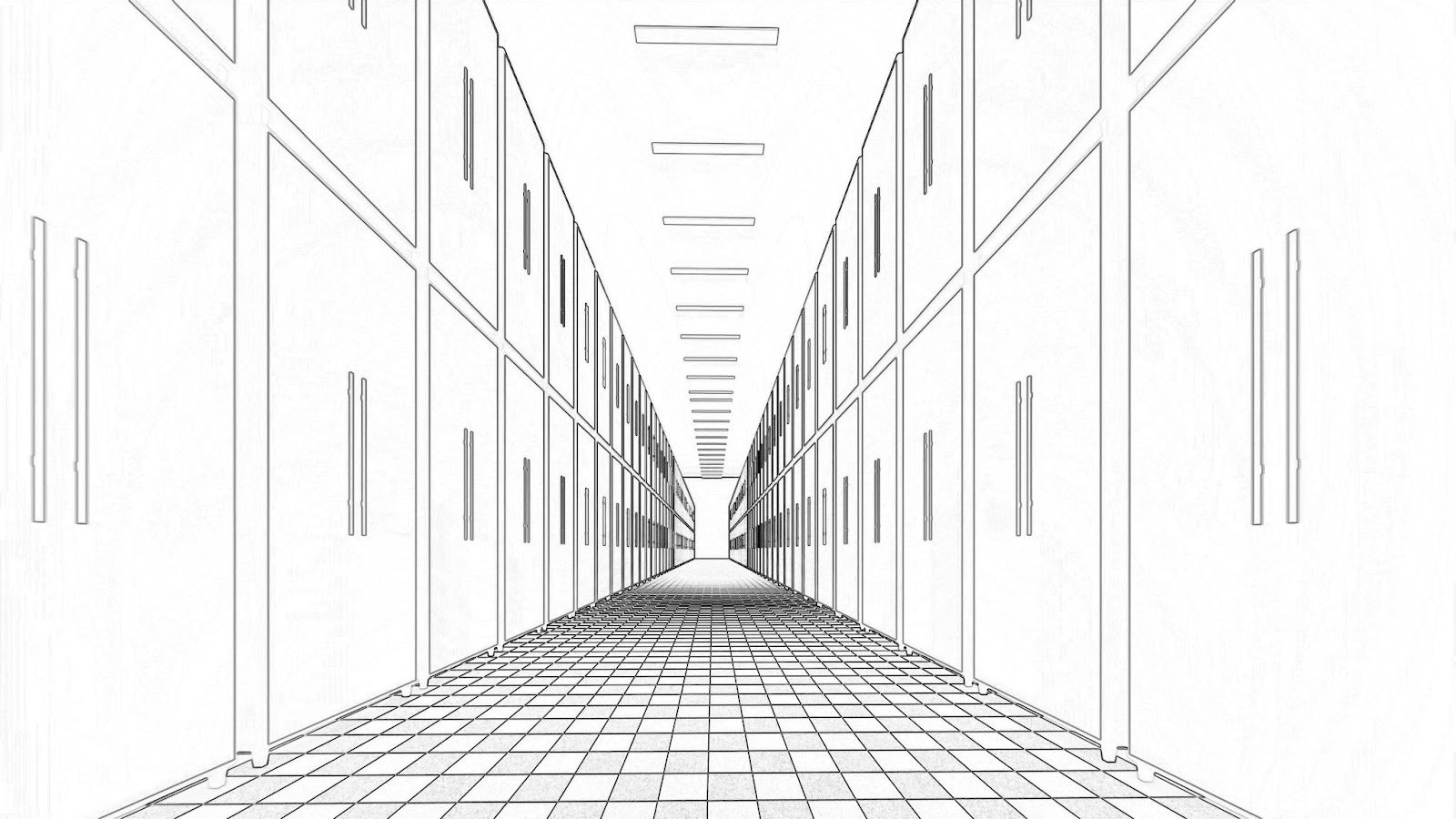Architectural Design: Datacenters
Architectural Design: Datacenters
With corporations facing ever-evolving data needs, it can be challenging to design a datacenter that won’t become obsolete in a decade.
The sheer cost of building a datacenter, alone, should be motivation to design one that can scale and adapt over time.
In this article, we’ll cover the standards, criteria, and best practices for designing a sustainable and adaptable new datacenter.
What is a Datacenter?
A datacenter is a facility that houses a corporation’s computer network, IT equipment, and data storage.
Many corporations relied on virtual cloud computing for data storage in the past, cloud services are becoming less popular due to the higher risks for data theft, hijacking, and leakage.
As demand shifts, more and more corporations are building their own datacenters.
Types of Datacenter Facilities
Not all datacenter facilities are built the same. There are several types, and each one caters to a different set of needs.
Enterprise Datacenters
This type of datacenter is designed for the sole use of one corporation. It is tailored to the unique data needs of the particular business or industry.
Managed Service Datacenters
While this datacenter still functions as a datacenter for one enterprise, it is managed by a third party. The enterprise leases the equipment, and the third party provides datacenter management services.
Colocation Datacenters
A colocation datacenter is a large datacenter divided into rentable modules. The datacenter has the infrastructure, but each company must provide its own components, such as servers, racks, and storage.
Cloud Datacenters
We discussed cloud datacenters at the outset of this section.
Although cloud storage is easily scalable, it comes with certain risks. However, some corporations still opt for this data storage solution.
For this article, we will be focusing on designing an enterprise datacenter.
Following Datacenter Design Standards
Since datacenter design options are vast and plenty, it’s wise to follow a few organizational standards that ensure your datacenter meets its desired objectives.
There are four major standards to follow when attempting to design an efficient datacenter.
Uptime Institute Tier Standard
Uptime Institute is considered a major player in the datacenter industry. They set the standard for several key metrics in datacenter infrastructure resources.
They developed a tier system that ranks a datacenter from basic capacity to ultimate in platform resiliency. These tiers are numbers with Roman numerals I, II, III, and IV.
Learn more about the specifications of each tier in TechTarget’s informative article.
ANSI/TIA 942-B
The Telecommunications Industry Association developed these standards for planning, designing, and constructing ANSI-accredited datacenters.
You can purchase these standards, follow their guidelines, and earn TIA 942-B certification to put your stakeholders at ease.
ASHRAE
This acronym stands for The American Society of Heating, Refrigerating and Air-Conditioning Engineers. As you may have guessed, they determine the heating and cooling standards for datacenter designs.
Their standards and guidelines can help optimize ventilation, energy efficiency, design, and construction.
EN 50600 series
The EN 50600 Series is the European standard similar to the Uptime Institute’s Tier system.
It provides IT cable and network design standards for better functionality and organization of datacenter infrastructure.
You Might Like: 13 Questions to Ask Your Commercial Architect
Steps to Designing a Datacenter
With your chosen standards in hand, you can design your datacenter to meet your business needs.
Here are the steps to follow.
Identify Your Specific Needs
Before you design your datacenter, calculate your current capacity needs, criteria, and future potential for growth.
You may discover that scalability is an important aspect for potential upgrades. With the right design, your datacenter can accommodate that when the time comes.
Which Uptime Institute tier does your datacenter infrastructure aim to meet? These tiers increase in complexity and security as the number rises, but so do the costs.
So, in order to even begin designing your datacenter, you will need to establish a budget.
Also, decide whether your datacenter will be constructed onsite or offsite of your business property.
Administration and Extra Storage
Will you strictly use this datacenter to house IT infrastructure and components, or will it serve a different purpose?
Decide whether it would be worth the investment to add offices, maintenance areas, or storage yards to your datacenter structure.
Determine the Physical Space Needs
If your datacenter is too small, it won’t be long before you run out of room. If it is too big, you’ll be investing capital in wasted space.
To determine the physical space needs of your datacenter design, you first need to know the dimensions of the equipment that will be installed. How many server racks and storage will your datacenter house?
To dig deeper into space requirements, read this article about right-sizing a datacenter.
Design Equipment Layout
Once you’ve established the design of your floorplan, you can determine the locations and arrangement of the equipment.
Server Rack
One of the most popular approaches to server rack design is to arrange them into hot and cold aisles in the server room.
Before you can plan a server rack installation, you will need to know the rack dimensions. You must also consider the location of the cooling system, power supply, and cabling.
UPS
To maintain business continuity and provide faster disaster recovery, you need a UPS ready to kick on when your main power source fails you.
Backup generators can drastically reduce the downtime of your servers. Another viable addition is to install automatic transfer switches for when this does happen.
Cooling Systems
Before you design your cooling system, determine how much cooling your facility will need.
Follow the standards set by ASHRAE to calculate your cooling requirements.
For optimal airflow design, placing air ducts close to equipment that produces the most heat, such as near the hot aisle.
You can also add barriers that redirect the flow of air from the air conditioning system to any sensitive equipment.
In cold climates, free cooling or air cooling is prominent. This type of cooling system is designed to draw in and recirculate cold exterior air. Equipment can also be water cooled.
There are many different types of cooling equipment, and more are being developed each year.
Related: Building Envelope Systems
Cable Placement
You can install and organize cables under the floor if you build a raised floor system to house them.
As an alternative solution, you can also organize your cables overhead from the rafters above.
Keep all corresponding cables in one track. This organizational approach saves space and reduces clutter.
Additional Considerations
There are several other systems integral to datacenter design.
These include:
Fire Suppression Systems
Security Systems
Building Management Systems
Telecommunication Systems
Virtualization Management Systems
Check Out: Sustainability in Commercial Interior Design
How to Design a Greener Datacenter
Datacenters have an enormous environmental impact because of their sheer power draw.
You can reduce your datacenter’s energy use by developing it with environmentally conscious and sustainable design principles in mind.
Below, we outline some of the best ways to do that.
Incorporate Low-Carbon Power Sources
You have several choices for lowering how much electricity your datacenter will use.
For example, incorporate one or more sustainable sources of energy, such as:
Wind
Solar
Battery Storage
Pump-Hydro Energy
Recycle Waste
To recycle or reduce water waste, you can implement greywater recycling and a rainwater capture system.
Heat sharing is another great way to put your datacenter waste to good use. The heat your datacenter emits is enough to heat hundreds of homes.
Optimize Software
Some datacenter solutions combine software-defined power with cabinet-mounted battery energy storage. This conserves energy.
You can also use AI to automate power-aware workload directing. This automation can be linked to your DCIM, which monitors the IT infrastructure.
Improve PUE
In datacenter design, the ability to maintain peak power usage effectiveness is a key marker of successful design. There are a number of ways to improve power efficiency.
Because cooling is one of the biggest drivers of energy use, high-efficiency cooling is one of the best ways to improve your PUE.
Some datacenters place too much emphasis on cooling and use temperatures that are lower than necessary. If you raise the temperature by a few degrees, you can make a significant dent in your cooling power usage while still keeping your datacenter safe.
Another way to improve your PUE is to use power distribution gear or to minimize gear.
Incorporate Sustainable Materials
The external design of a datacenter can also impact the sustainability of your datacenter.
Use a sustainable building material such as steel for the frame.
Installing a reflective roof can lower your datacenter’s internal temperature by reflecting the heat from the sun.
Purchasing materials from local warehouses will also reduce transportation fuel emissions.
Get the entire sustainable datacenter design guide here.
Common Mistakes to Avoid
Any project will come with its share of mistakes, but knowing some of the most common datacenter design mistakes can help you mitigate the risks.
1. Failure to Build a Holistic Financial Profile
When budgeting your datacenter build, you need to take the TCO (Total Cost of Ownership) into account, not just the building expense.
A holistic financial profile of a datacenter build includes capital expenses, operating expenses, and energy costs.
When you fail to take the TCO into account, it throws off the Cost-to-Build Estimation.
If the initial budget request isn’t enough, you must request more — which could indefinitely halt the progress of construction.
2. Choosing the Wrong Tier
Overbuilding your datacenter is a waste. Only build what you need.
Even though Tier III or IV are best, do you really need such a complex and costly datacenter, or could your business needs be met with a lower tier?
3. Designing in the Wrong Order
One very common and honest mistake that project owners make is choosing a site for your datacenter before designing the layout.
Yes, most commercial projects design a structure once they have selected a site. But datacenters should do the opposite.
Datacenter specifications will outline which types of sites are best suited for the project’s needs. This includes local zoning and regulatory requirements, exposure to environmental and man-made risks, and critical access to reliable and high-speed telecommunication service providers.
Another common mistake is planning the facility’s space and building parameters before the design criteria have been established.
4. Failure to Design with Change in Mind
Modern datacenters need to be flexible — and scalable. Technology is an ever-evolving beast, and your current datacenter needs will change over time.
You can make your design more adaptable by using modular racks and expandable systems. These support a higher electrical capacity and won’t interrupt the datacenter cooling system.
The simpler the design, the stronger the datacenter. It’s also easier to adapt and cheaper to run.
5. Failure to Mitigate Threats
From climate control to data security, datacenters face countless threats. You could be making a serious mistake if you don’t have a solution in place to mitigate them.
Avoid power supply outages and network disruptions by installing more than one source of backup power.
A comprehensive cyber security plan can also help to reduce hacking and malicious intent.
Reduce environmental threats by selecting the ideal site for your facility. You Ensure durable construction and follow preventative measures.
Likewise, physical security is another critical service that can reduce the threat of break-ins.
Careful consideration is needed when designing a datacenter that will not become obsolete in less than a decade.
ZP Architects & Engineering has helped many corporations design their datacenters — and we would love to help you design yours.
Our sister company, FMP Construction, can take our designs and build your datacenter to match our specifications.
Up Next: 6 Core Elements of Building Design and Construction: A Guide for Project Owners








